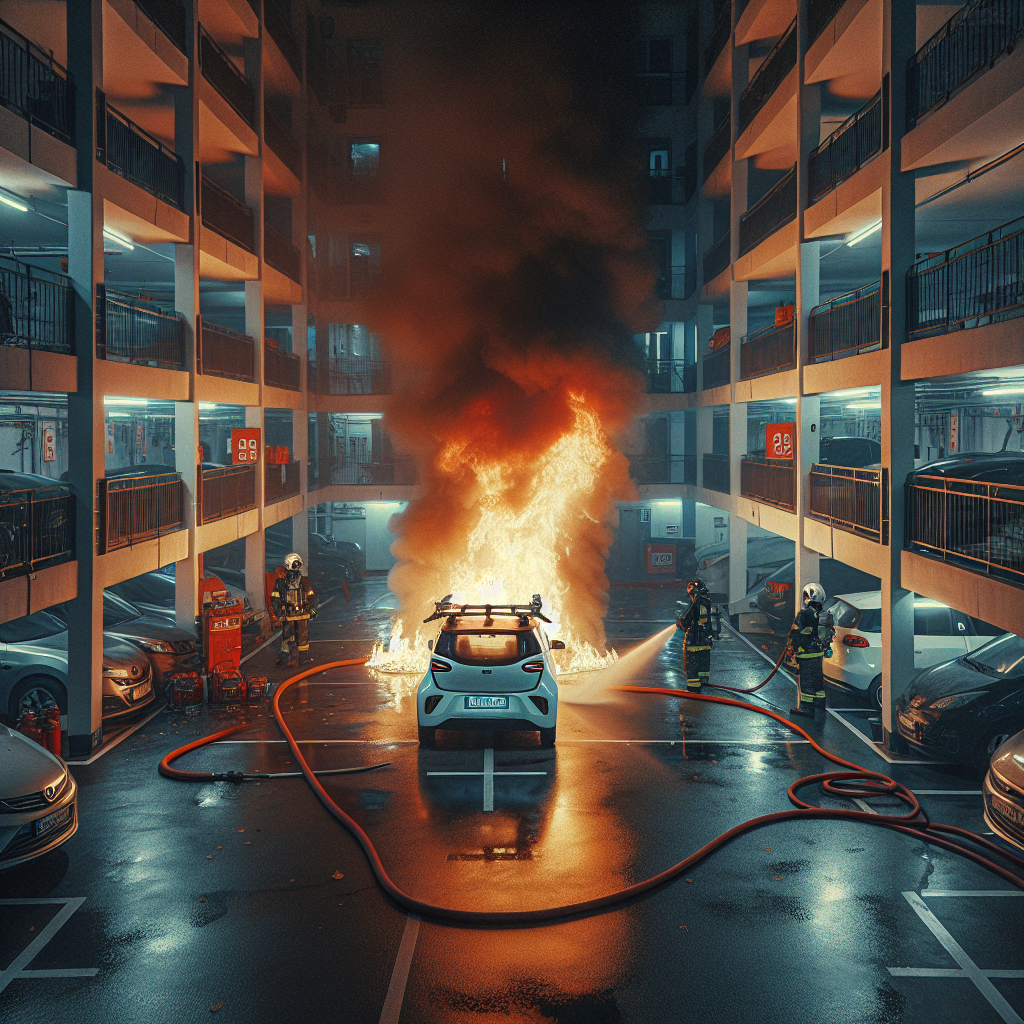
Early Morning Blaze Engulfs Electric SUV in Hackensack, Challenging Firefighters for Hours
Share
In the silent hours before the dawn of March 12, 2024, residents of a Hackensack apartment complex were startle by the piercing sound of alarms and the ghastly sight of an electric vehicle (EV) engulfed in flames. An Audi Q5 electric SUV parked in the lower-level lot on Main Street had caught fire, summoning firefighters to a battle that would rage for an exhausting seven hours.
Upon their arrival at approximately 1:30 a.m., fire crews waged an immediate attack against the roaring inferno. Initial efforts seemed victorious as the visible flames succumbed to the bravery and relentless efforts of the fire brigade. However, the car's battery presented the emergency teams with a volatile adversary, threatening to reignite at any moment.
Persistence and vigilance marked the firefighters' extended watch as they worked to smother the enduring threat posed by the EV's power source. This incident not only illuminated the dark streets of Hackensack but also cast a harsh light upon the growing menace of electric vehicle fires. Unpredictable and fierce, these blazes challenge traditional firefighting methods and fuel concern in the industrial and public sectors alike.
As the dust settled on Main Street, reflections on the morning's harrowing events funnel into discussions on prevention and innovation. The key lesson: traditional response strategies may falter against the unique dangers of EV fires, urging a swift pivot towards novel safety measures and equipment.

In the wake of this and similar incidents, a pioneering device surfaces as a beacon of hope—the FireTowel. Engineered to address the very risks underscored by the calamity in Hackensack, this tool is not just another fire blanket. Its superior thickness, weighted perimeter, and integrated handles offer a transformative approach to early fire interception and suppression, potentially sparing lives and property.
Positioned strategically in vehicles, the FireTowel could empower individuals to act in the critical initial moments of a fire, providing time for professional responders to arrive. By wrapping the ignition source before flames can fully engage, this innovative layer of defense offers a chance to thwart disaster and shapes a safer future for electric vehicle owners and the communities they inhabit.
